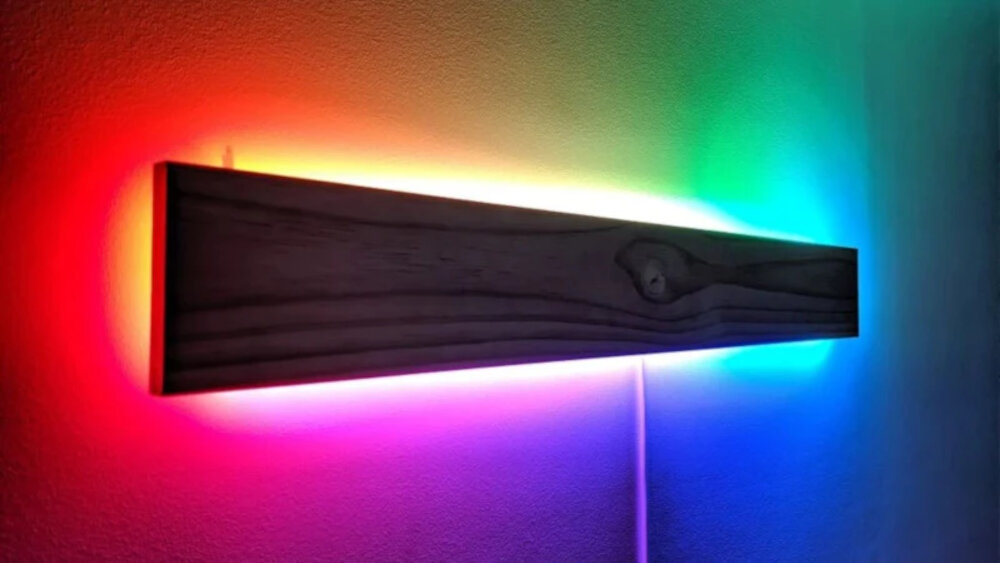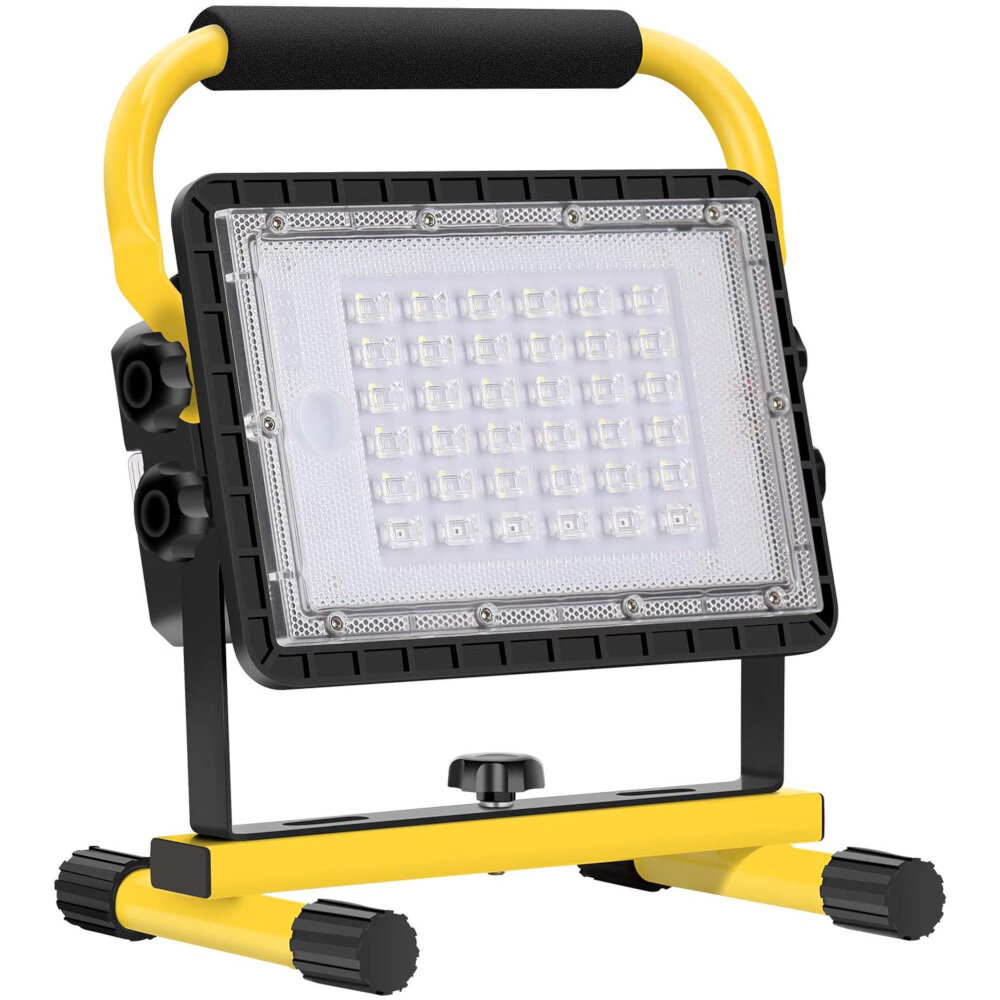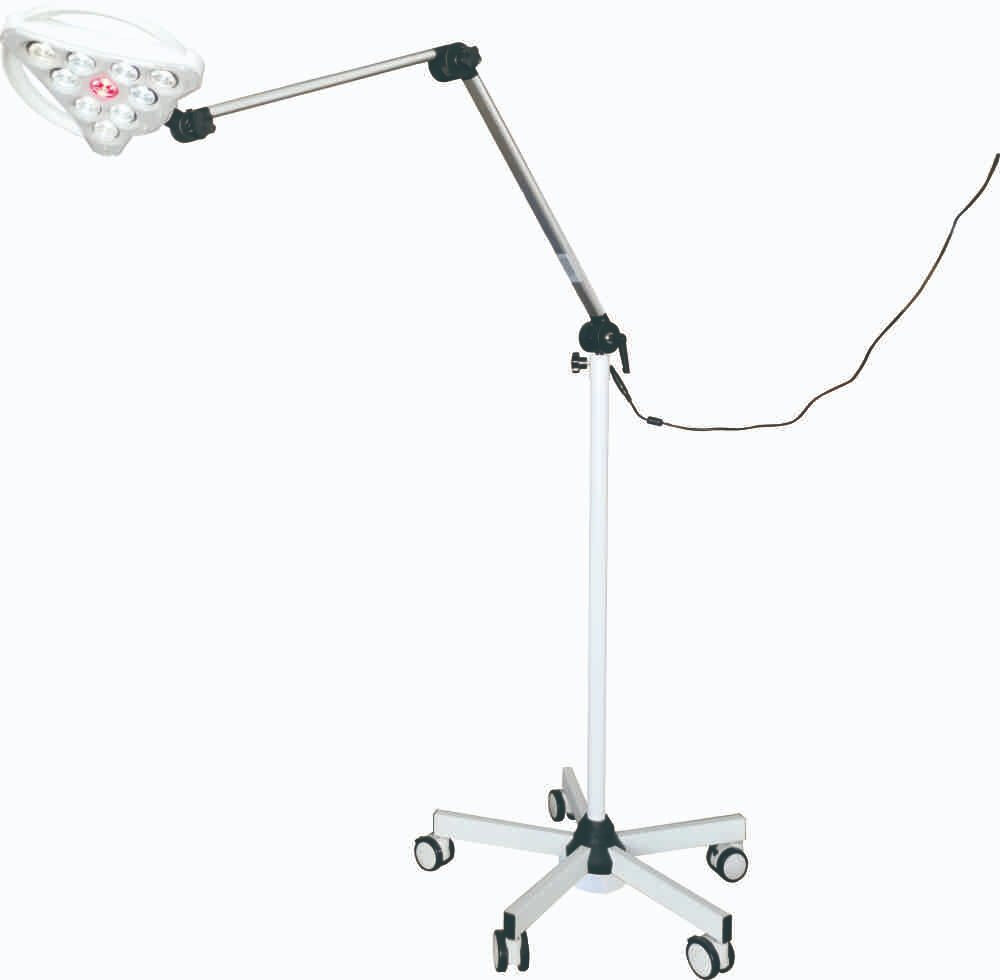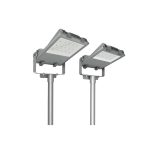Why Is Your LED Light Bulb Flashing When Switched Off? Here’s What You Need to Know

LED light bulbs are a popular and energy-efficient option for illuminating homes and businesses. However, there may be instances when you notice your LED light bulb flashing or flickering when it is switched off. This can be a puzzling and frustrating experience, especially if you’re unsure of the cause. Fortunately, there are several reasons why your LED light bulb may be flashing when switched off, and understanding the possible causes can help you resolve the issue. One possible reason for your LED light bulb flashing when turned off is due to residual electricity. This occurs when the switch is turned off, but there is still a small amount of electricity flowing through the circuit. The residual electricity can cause the LED light bulb to flash or flicker. Additionally, LED bulbs are more sensitive to residual electricity than traditional incandescent bulbs, which can contribute to the issue. Understanding the underlying cause of your flashing LED light bulb can help you take the appropriate steps to resolve the issue and ensure your lighting system is working correctly.
LED light bulbs or Light Emitting Diodes are energy-efficient lighting solutions that have gained immense popularity over the years due to their durability, long lifespan, and low energy consumption. Unlike traditional incandescent bulbs, LED bulbs produce light by using semiconductors that convert electrical energy into light. These bulbs are known to emit less heat, provide brighter and clearer illumination, and are available in different colors and designs. However, recently there have been instances of LED bulbs flashing when switched off, which can be attributed to various factors like incorrect wiring, voltage fluctuations, or even paranormal activities. It is crucial to identify the root cause of the issue to prevent any further damage or safety hazards.
LED bulbs have become increasingly popular in recent years, as they offer a more energy-efficient alternative to traditional incandescent bulbs. However, one issue that many people have experienced with LED bulbs is flickering. This can happen for a variety of reasons, such as voltage fluctuations, incompatible dimmer switches, or poor-quality bulbs. In some cases, flickering may be a sign of an electrical issue that requires professional attention. Whatever the cause, it is important to address flickering bulbs promptly to ensure proper functioning and safety.
Understanding the reason for flickering in LED light bulbs is crucial for several reasons. Firstly, it can be an indicator of a fault or issue with the bulb, which may require replacement or repair. Secondly, flickering can be a nuisance and cause discomfort, particularly for those with photosensitive conditions. Additionally, flickering can also be indicative of electrical problems, which may pose a hazard if left unaddressed. Thus, identifying the underlying cause of flickering is essential for ensuring the safety, comfort, and longevity of LED light bulbs.
Electricity Leakage

Electricity leakage is a common phenomenon where electrical energy leaks out from a circuit due to various reasons. This leakage can cause electrical appliances to malfunction, leading to high energy bills and even electrical fires. One of the most common causes of electricity leakage is faulty wiring, which can occur due to poor installation or damage caused by rodents or other pests. Over time, wiring can also deteriorate due to age, which can lead to leaks. Another cause of electricity leakage is faulty appliances that are not properly grounded, leading to electrical energy escaping into the air. This can be particularly dangerous in wet or humid conditions, as the electrical current can be conducted through the air, leading to electric shocks or fires. In addition to faulty wiring and appliances, electricity leakage can also occur due to power surges, which can cause electrical energy to flow back into a circuit. Power surges can occur due to lightning strikes or other external factors, and can cause significant damage to electrical appliances and systems. To prevent electricity leakage, it is important to ensure that all electrical appliances are properly grounded and that wiring is installed correctly. Regular maintenance and inspections can also help to identify and repair any potential issues before they become a problem. By taking these steps, you can help to ensure that your electrical system is safe, efficient, and reliable.
Electricity leakage can occur when there is a fault in the wiring or circuitry of an electrical system. When this happens, electricity can flow through unintended pathways, causing a drop in voltage and resulting in flickering lights. In LED light bulbs, the leakage current can be caused by a faulty driver circuit, poor wiring, or even the presence of moisture. A small amount of current can be enough to cause the LED bulb to flicker when switched off as the residual current continues to flow through the circuit. This can be a sign of a potential electrical hazard and should be investigated by a qualified electrician.
Electricity leakage can cause a lot of problems, not only in terms of energy wastage but it can also lead to serious hazards such as electrical fires. Here are some tips to fix electricity leakage; firstly, identify the source of the leakage by observing the appliance or circuit it is connected to. Secondly, turn off the main power switch and unplug the appliance or turn off the circuit breaker if it is a circuit. Thirdly, inspect for any damaged or frayed wires or connections and replace them if necessary. Finally, if you are not comfortable with handling electrical repairs, it’s best to call a licensed electrician to fix the issue. Remember, electrical safety is paramount and should never be taken lightly.
Bad Bulb

A bad bulb is one of the possible causes of an LED light bulb flashing when switched off. A bad bulb occurs when a component inside the LED light bulb fails to work properly. This can be due to a manufacturing defect or wear and tear. When a bulb is bad, it can cause the light to flicker or flash when turned off. This can be a frustrating experience for anyone, especially if the flashing is frequent and persistent. In some cases, a bad bulb may also emit a buzzing sound when in use, which can be a nuisance for those sensitive to noise. Replacing a bad bulb is the best solution to fix the flashing issue. However, it is important to note that not all flashing problems are caused by a bad bulb. Other factors such as faulty wiring, loose connections, or incompatible dimmer switches can also cause the LED light bulb to flash when switched off. Therefore, it is recommended to seek the help of a professional electrician to diagnose and fix the issue. In conclusion, a bad bulb is one of the possible causes of an LED light bulb flashing when switched off. Replacing the bulb can fix the issue, but it is important to rule out other potential causes before doing so.
A faulty LED bulb can cause flickering due to a variety of factors. One possible reason is an issue with the LED driver, which regulates the electrical current flowing through the bulb. If the driver is faulty or incompatible with the bulb, it can cause the bulb to flicker or even fail completely. Another potential cause is a poor connection between the bulb and the socket, which can result in intermittent contact and flickering. Additionally, voltage fluctuations or power surges can also cause flickering in LED bulbs. In any case, it’s important to address the issue promptly to prevent further damage and ensure safe and reliable lighting.
If you are facing a bad LED bulb, there are a few tips that can help you fix it. Firstly, you can try to check the bulb’s connection and ensure it is secure. Secondly, you can try to change the bulb’s location or switch it to a different socket. This may help to rule out any electrical issues with the socket. Another tip is to check the bulb’s wattage and make sure it is compatible with the fixture. Additionally, you can try resetting the circuit breaker or changing the dimmer switch if the bulb is connected to one. If none of these tips work, it may be time to replace the bulb. Overall, troubleshooting a bad LED bulb may take some patience and experimentation, but it is possible to fix the issue with a little effort.
Incompatible Dimmer Switch

If you are experiencing flashing LED light bulbs even when the switch is turned off, it may be due to an incompatible dimmer switch. Not all dimmer switches are designed to work with LED light bulbs, which can cause flickering or flashing even when the switch is turned off. This is because the dimmer switch may not be able to completely shut off the power to the LED bulb, resulting in residual current flowing through the circuit and causing the flashing. To solve this issue, it is important to ensure that the dimmer switch you are using is compatible with LED light bulbs. Look for dimmer switches that are specifically designed for use with LED bulbs, as they are more likely to provide the necessary voltage regulation and power control to properly dim LED lights without causing any flickering or flashing. Additionally, it is also important to make sure that your LED bulbs are compatible with dimmer switches, as not all LED bulbs are designed to be used with dimmer switches. Checking the packaging or manufacturer’s website for compatibility information can help ensure that you are using the right combination of bulbs and switches to avoid any flashing or flickering issues.
An incompatible dimmer switch can cause flickering in LED light bulbs due to the difference in technology between the two. Traditional incandescent bulbs have a filament that heats up and glows, while LED bulbs use a semiconductor to produce light. Dimmer switches designed for incandescent bulbs work by reducing the amount of electricity flowing to the filament, which dims the light. However, this method does not work with LED bulbs because they require a constant current to operate properly. When used with an incompatible dimmer switch, the LED bulb may receive an uneven current, causing it to flicker. This flickering can be annoying and even harmful to people with certain medical conditions, so it is essential to use a dimmer switch specifically designed for LED bulbs.
If you’re experiencing flashing LED lights when they’re turned off, you’re not alone. Fortunately, there are several steps you can take to fix the issue. The first step is to check if the LED light bulb is properly screwed into the socket. If it’s not, this could cause the bulb to flicker even when it’s turned off. Another possible culprit is a faulty light switch, which can cause the bulb to receive a small amount of electrical current even when it’s supposed to be off. In this case, replacing the switch should solve the problem. Lastly, it’s possible that the LED bulb itself is faulty and needs to be replaced. By following these tips, you can put an end to the annoying flashing and enjoy a fully functioning LED light bulb.
Power Surge

A power surge is a sudden and temporary increase in the voltage and current flowing through an electrical circuit or system. This can occur due to various reasons such as lightning strikes, power outages, or equipment failures. When a power surge occurs, it can cause damage to electronic devices and appliances that are connected to the power supply. The electrical components within the devices can be overloaded, leading to short circuits, blown fuses, and other malfunctions. In the case of LED light bulbs, power surges can cause them to flicker or flash when switched off. This is because the voltage and current fluctuations can interfere with the electronic circuitry of the bulb, causing it to behave erratically. To protect your LED light bulbs from power surges, it is recommended to use surge protectors or voltage stabilizers. These devices are designed to regulate the voltage and current levels of the power supply, preventing any sudden spikes or drops that could damage your electronic devices. Additionally, it is important to ensure that your home’s electrical system is properly grounded and that all wiring and outlets are up to code. Regular maintenance and inspections can help identify any potential hazards before they cause damage to your appliances and electronics. By taking these precautions, you can ensure that your LED light bulbs and other electronic devices are protected from power surges and other electrical hazards.
A power surge is an unexpected increase in the electrical current flowing through a circuit. When an LED light bulb is connected to a circuit that experiences a power surge, it can cause the bulb to flicker. This is because the surge can overload the electrical components of the bulb, causing them to function improperly. Additionally, the sudden increase in current can cause the bulb’s internal circuitry to shut down momentarily, which can result in a brief loss of power and subsequent flicker. In some cases, a power surge can also cause damage to the LED driver, which regulates the current flowing to the bulb, further exacerbating the flickering issue. To avoid this problem, it’s important to use surge protectors and voltage regulators to prevent power surges from reaching your LED light bulbs.
If you’re experiencing an LED light bulb flashing when it’s switched off, there are a few tips you can try to fix the issue. First, check if the bulb is overheating and make sure it’s not touching any nearby surfaces. If it is, move the bulb to a cooler location. Additionally, try changing the bulb’s dimmer switch to one that’s compatible with LEDs. Another possibility is that there’s a loose connection in the circuit, so try tightening any loose wires or connections. If none of these tips work, it may be time to replace the bulb or seek professional help.
LED light bulbs are a popular choice for their energy efficiency and long lifespan. However, one common problem with LED bulbs is flickering, which can be caused by a variety of factors. One reason for flickering is voltage fluctuations, which can occur when the wiring in your home is outdated or when there are too many electrical devices drawing power from the same circuit. Another cause of flickering is incompatible dimmer switches, as not all LED bulbs are compatible with all dimmer switches. Additionally, LED bulbs may flicker due to overheating, which can be caused by using bulbs with incorrect wattage or by placing them in enclosed fixtures that don’t allow for proper ventilation. Understanding the reasons behind LED bulb flickering can help you find the right solution and enjoy steady, reliable lighting.
Identifying and fixing an issue in any device is crucial to ensure its proper functioning and longevity. The same applies to LED light bulbs that may start flashing even when switched off. This issue can be a sign of a range of underlying problems, including electrical faults or incompatible dimmer switches. Therefore, it is essential to identify the root cause of the flashing and fix it to prevent any further damage to the bulb or even the electrical system. Neglecting the issue may lead to a higher electricity bill, the need for frequent replacement of bulbs, or worse, a potential fire hazard. Therefore, it is essential to take prompt action to identify and fix the issue to ensure the safety, efficiency, and longevity of the LED light bulb.
In conclusion, LED light bulbs flashing when switched off can be a cause for concern, but it’s typically nothing to worry about. It’s usually due to residual voltage in the wiring or a faulty switch, and can be easily fixed by hiring a licensed electrician to investigate and resolve the issue. It’s important to remember that electrical problems should always be taken seriously and addressed promptly to avoid potential safety hazards. As a general recommendation, it’s a good practice to invest in high-quality LED light bulbs and to have your home’s electrical system regularly inspected by a professional to ensure it’s functioning properly.
Conclusion

In conclusion, a flashing LED light bulb when switched off can be a cause of concern for many people. However, it is important to understand that this phenomenon is not uncommon and can be attributed to various factors such as residual current, faulty wiring, or the presence of smart home technology. By identifying the root cause of the problem and taking appropriate measures such as installing a surge protector or contacting an electrician, one can ensure the safety and functionality of their LED light bulbs. It is always better to be proactive and take necessary precautions to avoid any potential hazards. So, if you notice your LED light bulb flashing when switched off, don’t panic, just investigate and take action.




